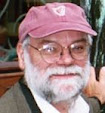In America we are used to a fairly constant pattern of names. People get a first name, a middle name, and a last name (surname). Sometimes they go by a nickname or shortened version of their name. One of my brothers is named "James Fenton Coughlin." His nickname is "Jim" or "Jimmy." Catholics and members of some other religions also get a confirmation name. My confirmation name is "Patrick."
That pattern is not present everywhere in the world, and in some cultures it is very different. In many places it is not unusual for a brother and a sister to have different last names (this can happen to Russians, Lithuanians, and Irish, to name just a few).
Wikipedia has an interesting article on Irish naming customs that shows the amazing complexity of this issue. We don't fully trust Wikipedia as a source, but generally I find it pretty good. Here are some passages from that Wikipedia article:
"Irish name"
(From Wikipedia, the free encyclopedia)
A formal name consists of a given name and a surname, as in English. Surnames in Irish are generally patronymic in etymology, although they are no longer literal patronyms, as Icelandic names are. The form of a surname varies according to whether its bearer is male or female, and in the case of a married woman, whether she chooses to adopt her husband's surname.
An alternative traditional naming convention, not used for official purposes but generalised in Gaeltachtaí or Irish-speaking areas, consists of the first name followed by a double patronym, usually with the father and grandfather's names. Sometimes the name of the mother or grandmother may be used instead of that of the father or grandfather.
A first name may be modified by an adjective to distinguish its bearer from other people with the same name. Óg "young" and Mór "big" are used to distinguish father and son, like English "junior" and "senior," but are placed between the given name and the surname: Seán Óg Ó Súilleabháin corresponds to "John O'Sullivan, Jr."(although anglicised versions of the name often drop the "O'" from the name). Adjectives denoting hair color may also be used, especially informally: Pádraig Rua ("red-haired Patrick"), Máire Bhán ("fair-haired Mary").
In former times the word Beag/Beg, meaning "little", would sometimes be used in place of Óg. For example, the grandfather of James Cardinal Gibbons of Baltimore, Maryland, was Luke Mor Gibbons, and one of his sons (an uncle of Cardinal Gibbons), was known as Luke Beg. This did not necessarily indicate that the younger Luke was small in stature, merely younger than his father. Sometimes beag would be used to imply a baby was small at birth – and premature – particularly when the baby was born less than 9 months after marriage.
A man's surname generally takes the form Ó (originally "grandson") or Mac ("son") followed by the genitive case of a name, as in Ó Dónaill ("grandson of Dónall") or Mac Gearailt ("son of Gerald"). A son has the same surname as his father. A daughter's surname replaces Ó with Ní (reduced from Iníon Uí "daughter of the grandson of") and Mac with Nic (reduced from Iníon Mhic "daughter of the son of"); in both cases the following name undergoes a mutation called "lenition." Thus the daughter of a man named Ó Dónaill has the surname Ní Dhónaill and the daughter of a man named Mac Gearailt has the surname Nic Gearailt. If, however, the second part of the surname begins with the letter C or G, it is not lenited after Nic: Nic Carthaigh, Nic Gearailt.
If a woman marries, she may choose to take her husband's surname. In this case, Ó is replaced by Bean Uí ("wife of the grandson of") and Mac by Bean Mhic ("wife of the son of"). In both cases bean may be omitted, in which case the woman uses simply Uí or Mhic. Again, the second part of the surname is lenited (unless it begins with C, in which case it is only lenited after Uí). Thus a woman marrying a man named Ó Dónaill may choose to be use Bean Uí Dhónaill or Uí Dhónaill as her surname; a woman marrying a man named Mac Gearailt may choose to use Bean Mhic Gearailt or Mhic Gearailt.
If the second part of the surname begins with a vowel, the form Ó attaches an h to it, as in Ó hUiginn (O'Higgins) or Ó hAodha (Hughes). The other forms effect no change: Ní Uiginn, (Bean) Uí Uiginn; Mac Aodha, Nic Aodha, Mhic Aodha, and so forth. Mag is often used instead of Mac before a vowel or the silent fh. Ua is an alternative form of Ó.
Some names of Norman origin have the prefix Fitz, Latin filius "son", such as Fitzwilliam, Fitzgerald, and so forth.
In Gaeltacht (Irish-speaking) areas it remains customary to use a name composed of the first name, followed by the father's name in the genitive, followed by the name of the paternal grandfather, also in the genitive. Thus Seán Ó Cathasaigh, son of Pól, son of Séamus, would be known to his neighbours as Seán Phóil Shéamuis. Occasionally, if the mother or grandmother was a well-known person locally, her name may be used instead of that of the father or grandfather. If the mother's name is used, then that of the maternal grandfather (or potentially grandmother) follows it, for example, Máire Sally Eoghain.
These names are not used for official purposes. Often a nickname or English version of a name is used in their composition where the person would use a standard Irish form in formal circumstances. For example, the prominent sean-nós singer Seán Mac Dhonnchadha; Seán Mac Dhonnchadha is perhaps better known as Johnny Mhairtín Learaí.
The Irish have a traditional system for naming children: the first son is named after the father's father, the second son after the mother's father, the third son after the father, the first daughter after the mother's mother, the second daughter after the father's mother, the third daughter after the mother. Any further children are named by the parents' choice.This has led to some spectacular names being made more common, for example there are plenty of Assumptas and Perpetuas, and many girls were named after Saints Theresa and Bernadette in the 1950s shortly after they were canonised. Many families still adhere to this way of naming children, although it is becoming less common nowadays with the influx of more secular names from the world of TV and popular music. Traditional names, like Gráinne, Áine and Cathal, or Irish versions of Norman names, such as Seán (from Norman French Jean), Siobhán and Sinéad, are also very common. It's possible for several cousins to have exactly the same name, eg. Daniel Murphy, if all their fathers were brothers, and they are named after the same grandfather. To avoid confusion a pet name may be used, or a middle name eg Daniel Patrick may be called Dan Pat, and Daniel John may be called Danny John. Though it has been seen in older high class families where family records are present that the child's name can be that of an ancestor or famous person, such a thing is most prominent in the isolated families, such as the Mac Diamadas of Limerick and the Mac Gillachs of Donegal whose families have dated back to the 10th century.
The article goes on, showing even more complexity in Irish naming traditions. One thing that I would like to investigate is the application of traditional naming customs to my genealogy research.
Wednesday, March 4, 2009
Subscribe to:
Post Comments (Atom)


No comments:
Post a Comment